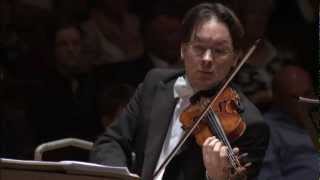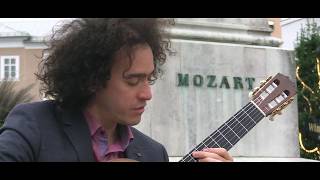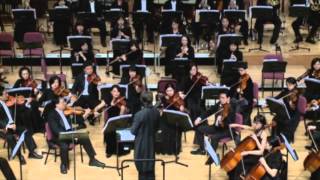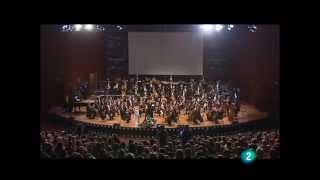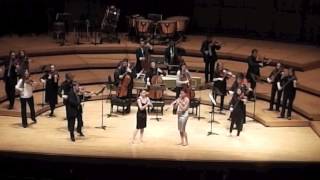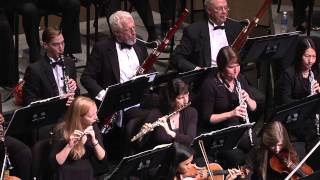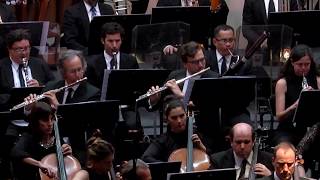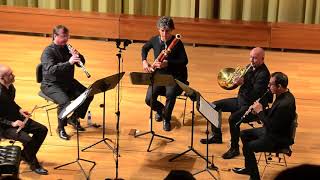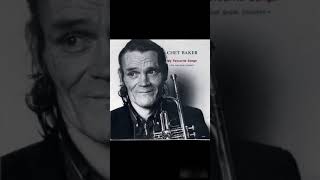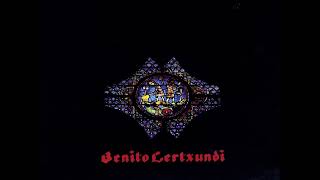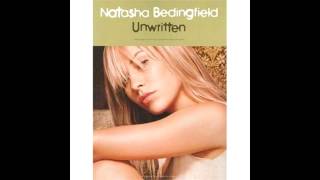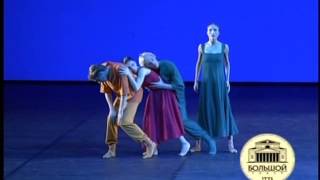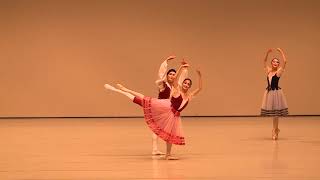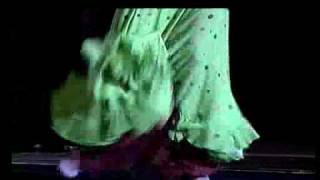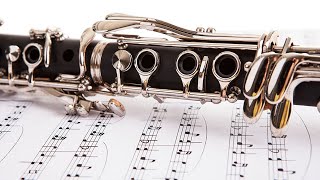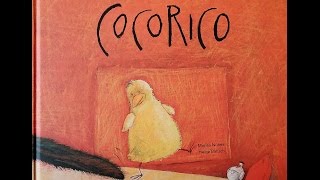Recommended music videos for initiation to classical music
Jean-Philippe Rameau (1683-1764) was a French composer, harpsichordist and musical theorist, highly influential in the Baroque era, replacing Jean-Baptiste Lully as the dominant composer of French opera. Rameau 's lyrical work constitutes the majority of his musical contribution and marks the apogee of the French Baroque with his best-known work, the opera-ballet Les Indes galantes . Despite everything, his lyrical works were forgotten until the mid- 20th century as they benefited from the movement of rediscovery of early music; his works for harpsichord, however, were always present. Rameau is generally considered the most important French musician before the 19th century ; He died in 1764 at the age of 81.
Emmanuelle Haïm , (1962) harpsichordist and conductor specialized in baroque music, who decided on this profession after her experience as Simon Rattle 's assistant and who has had relevant performances directing the Berlin Philharmonic, the Chicago Opera and the BBC Proms , among other top-level groups.
Mozart and Freemasonry . Freemasonry appeared in Europe at the end of the 17th century as a selective group of philanthropic nature, with a federal structure and with humanistic objectives, such as the search for truth, the study of human behavior, the sciences and the arts and the social and moral development of people and society; all of this based on a feeling of brotherhood, whose teachings are symbolized with elements of masonry. At the age of 28 , Mozart entered the Masonic Lodge of Vienna as an apprentice ; The following month he rose to the rank of Companion and four months later he was named Master Mason . Influenced by the Enlightenment , he pursued rationalism, although without joining the occult character of many of his companions.
Mozart's Turkish March is the popularly known third and last movement (“Rondò Alla Turca: Allegretto ”) of the piano sonata no. 11 . Their music imitates the sound of the Turkish Janissary bands, music that was very fashionable at the time. This is one of Mozart 's most listened to works and one of the most covered; On this occasion, we present it in an arrangement for guitar performed by the distinguished Mexican guitarist Cecilio Perera .
Charles Gounod (1818-1893) was a French composer known to the general public for his Ave Maria , based on a prelude by Bach . He was born in Paris and received his first classes from his mother until he enrolled at the Conservatory . He was a very prolific composer with both sacred and secular works; Among all, his opera Faust , which we offer today, deserves special consideration. His influence on other French composers such as Bizet, Saint-Saëns and Jules Massenet is undoubted. Even Debussy himself declared it "necessary" in that its aesthetics represented for that generation of French a powerful counterweight to the overwhelming Wagnerian push.
March is a composition defined by movement or rhythm. It can be considered within the traditional dances, and is structured in binary or quaternary time, although the most common is the binary and its musical form generally consists of theme, development, trio and re-exposition of the theme, and may sometimes have an introduction and a coda . A march can present very different characteristics, depending on the purpose for which it is composed: circus march , a hurried step; funeral march , with slow walking; military march , with a light step; wedding march , with a solemn air; processional march; ; redoubled march or pasodoble , whose origin is the military march; triumphal march , etc., etc.
Today we present the Funeral March for a Puppet , originally written for solo piano and later orchestrated by the same author. The work achieved great popularity when it was used by film director Alfred Hitchcook. This time under the baton of maestro İbrahim Yazici (1970), a Turkish conductor who began his career at the Ankara State Opera, from which he left to direct the best orchestras in Turkey .
Inmaculada Saratxaga (Amurrio, Araba, 1972), better known as Inma Shara , is a Basque orchestra conductor. He started playing music at the age of 4 and at 16 he opted for the baton as an instrument. He studied at the Bilbao Conservatory and the Vitoria Conservatory. He has conducted the most important Spanish symphony orchestras and has collaborated with some of the best orchestras in the world such as the London Philharmonic Orchestra, the Israel Philharmonic and the Czech, Russian, Rome, Taiwan, Milan, Lithuania, Ukraine , etc. symphonies. He also collaborates with soloists of the stature of Mischa Maisky, Boris Berezovsky or Shlomo Mintz , among others. She was named "Honorary Ambassador of the Spain Brand, for being "one of the most brilliant representatives of the new generation of orchestra conductors”
Cinema in Concert . 1 (00´00´´) On a quiet island in the South 1959 .-. 2 (05´22´´) Life is beautiful 1997 .-. 3 (11'01'') Cabaret 1972 .-. 4 (16'05'') The Third Man 1949 .-. 5 (20´27´´) Summer of 42 1971 .-. 6 (26'04'') Fiddler on the Roof 1971 .-. 7 (31´36´´) Forrest Gump 1994 .-. 8 (36´16´´) Life in Pink 2007 .-. 9 (40´23´´) 2001 A Space Odyssey 1968 .-. 10 (42´26´´) Doctor Zhivago 1965 .-. 11 (47´24´´) Sand Castles 1965 .-. 12 (51´18´´) Hatari 1962 .-. 13 (54´47´´) The Last of the Mohicans 1992 .-. 14 (1h 04´22´´) Horizons of greatness 1958 .-. 15 (1h 09´38´´) Casablanca 1942 .-. 16 (1h 15´58´´) The Pink Panther 1963 .-. 17(1h 21´28´´) An American in Paris 1951
Recommended classical music videos
Tomaso Albinoni (1671-1751) was an Italian Baroque composer, who was born and died in Venice ; known in his time for his operas, when today his popularity comes above all from his famous Adagio , which was not written by him, but rather composed in 1945 by the Italian musicologist Remo Giazotto based on some fragments of a sonata for strings and organ. by Albinoni . In contrast to the composers of his time, he never sought a position in the Church or the Court , since he defended himself with his own resources and was tremendously jealous of his own independence. Son of a wealthy family, he studied singing and violin and composed some 50 operas and abundant instrumental music; above all, sonatas for solo and trio and concertos for oboe and violin.
The Concerto for two oboes, op. 9, No. 9 , which we present today, consists of the three movements common at this time: Fast-Slow-Fast, in which the oboe duo dialogues with a string orchestra. The role of soloists is played by Emily Knaapen and Emily Tsai , American oboists who combine their profession as instrumentalists with teaching and are accompanied by the University of Maryland Symphony Orchestra .
Modest Mussorgsky (1839-1881) was a Russian composer who strongly defended and practiced the objectives of the group of The Five ( César Cui, Milij Balakirev, Modest Mussorgsky, Nikolai Rimsky-Korsakov and Alexandre Borodin ). His mother, Yulia Ivanovna, a professional pianist, introduced him to the study of the piano at the age of six; At the age of 13 he entered the Military Academy of Officers of the Imperial Guard , while the following year he published his first composition, a polka ; Around this time he met Balakirev from whom he received composition classes and information about what would become the group of The Five ; At the age of 19 he abandoned his military career to be able to dedicate himself entirely to composition. He died at the age of 42 after a series of epileptic seizures.
A Night on Mount Pelado (or St. John's Night on Mount Pelado ) is a symphonic poem by Mussorgsky . The piece was originally inspired by a story by Nikolai Gogol , in which a peasant witnesses a coven on Bald Mountain , near Kiev on St. John's Eve (equivalent to Walpurgis Night ). Mussorgsky headed the score with some phrases, which helped to better understand the atmosphere of the work: Underground rumors of supernatural voices.- Appearance of the spirits of darkness and Chernobog (Satan).- Glorification of Chernobog and black mass.- Coven of witches.- It is a coven of witches and a peasant sees them, dispersing the spirits of darkness.- Dawn .
Nadia Boulanger (Paris 1887-1979) was a French composer, pianist, conductor, intellectual and teacher who trained and taught many of the great composers of the 20th century . According to composer Ned Rorem , "she was the most important music pedagogue who ever lived." Daughter of the composer Ernest Boulanger and his wife Raissa (1856-1935) , at a very young age, she won the Grand Prix of Rome , the highest distinction that a musician could receive. She studied with Gabriel Fauré and Charles-Marie Widor . At first, he taught elementary piano and piano accompaniment classes; then, harmony, counterpoint, fugue and organ and it is estimated that he had more than 1,200 students, among whom it is worth highlighting Copland, Menotti, Bernstein, Glass, Narcís Bonet or Astor Piazzolla.
Today we offer his Fantasía piano y orchestra in a version by the eminent French pianist living in Argentina Anaïs Crestin , accompanied by the Salta Symphony Orchestra , conducted by its owner, the Israeli maestro Noam Zur.
Robert Gerhard (1896 - 1970) Catalan composer, son of a Swiss father and a French mother. After two years of commercial studies in Switzerland , forced by his father, he returned to his homeland to study piano under the direction of Enrique Granados and composition under Felipe Pedrell, Falla and Granados himself. Between 1923 and 1928 Gerhard studied with Arnold Schönberg in Vienna and Berlin , and the teacher-student relationship became a true friendship until the teacher's death. After returning to Catalonia , he was a musical advisor to the Government of the Generalitat . Exiled after the Spanish Civil War, he died in England , where he developed much of his career with a highly modern language that places Gerhard at the forefront of the aesthetic concerns of his time.
The Wind Quintet is a group of five instrumentalists (mostly flute, oboe, clarinet, French horn and bassoon ). Unlike the string quartet , whose sound color is very homogeneous, the instruments of the wind quintet differ considerably from each other in their timbre and technique. The modern quintet emerged from the group sponsored by Joseph II of Habsburg in the 18th century in Vienna : 2 oboes, 2 clarinets, 2 horns and 2 bassoons, until the quintets composed by Anton Reicha and Franz Danzi definitively established the genre: flute, oboe, clarinet, horn and bassoon . Although they declined during the second half of the 19th century , they regained strength in the 20th century .
Today we present the Gerhard Wind Quintet offered by the OCG Wind Quintet.
Recommended music videos for all tastes
Chet Baker (1929-1988) was an American trumpeter, singer and jazz musician. Exponent of the cool style (the west coast jazz of the fifties). Baker was popularly nicknamed the James Dean of jazz due to his good-looking appearance. The latter, together with the intimacy and lyrical elegance of his first performances—in addition to his peculiar voice for the genre—made him appear as a jazz player recognized by the public and critics when he debuted as a soloist; although he had already had notable participations in jazz groups such as Charlie Parker & Chet Baker and Gerry Mulligan Quartet .
Singer Heize was born in Daegu, South Korea . As a child, she studied cello and played classical music and ballads. However, she accidentally heard rap , to which she became attracted and began writing her own lyrics. Before her debut, she was writing while she was in class at school and a teacher called her, thinking he would scold her but the teacher told her to go down the path of music if she liked it. Upon hearing his teacher's words, he decided to become a singer, making his debut in 2014 with his first mini-album " Heize ". Today we present a collection of his most successful songs.
Ez Dok Amairu (“there are no thirteen”: there are no curses) was a group of Basque intellectuals, artists and singer-songwriters, mostly from Guipuzcoa, that emerged in 1966 and lasted until 1972; group that, through the new Basque song, spread messages of social and political justice and freedom for the Basque People .
Benito Lertxundi (1942) is a Basque singer-songwriter born in Orio (Gipuzkoa) and one of the members of Ez Dok Amairu ; He released his first album in 1971, although by then he had already published three 45 rpm albums with songs like Zenbat gera and Loretxoa that toured the most remote places in the Basque geography a thousand times. Benito has been a singer who, like Getaria's txakoli , has improved over time: his tuning and phrasing are more precise than in his beginnings and his songs are more elaborate and adapted to his own tessitura; He is currently, together with Mikel Laboa, who died in 2008, one of the leading pillars of Basque song and continues to be the mirror in which the new Basque singer-songwriters look at themselves.
Natasha Bedingfield (1981) She is an English singer who debuted in 1990, at only nine years old, as a member of a Christian dance/electronic group; Throughout that decade he made various recordings for religious institutions. In 2004 he released his first album, Unwritten , an album that we suggest today, with a sale of more than two million copies and which earned him a Grammy Award . During these years he has toured Europe and the USA and released various singles, while he continues to prepare his fourth album.
Recommended peculiar videos
Leonid Desyátnikov was born in 1955 in Kharkiv , Ukraine. He graduated from the Saint Petersburg Conservatory, where he studied composition and instrumentation. He is the author of four operas, the symphony The Rite of Winter 1949 , vocal cycles of the poems of Rilke and the poets of the Oberiú group, and several instrumental transcriptions of themes by Astor Piazzolla . The same composer defines his music as "an emancipation of consonance, transformation of banality and 'minimalism' with a human face." His favorite genre is "a tragically mischievous trifle." Desyátnikov has been awarded important national and foreign awards, including the Russian State Prize .
Russian Seasons is a ballet choreographed by Alexei Ratmansky with music by Leonid Desyatnikov and costumes designed by Galina Solovyeva . The ballet is structured in 12 scenes: Scene 1 (0:00), Scene 2 (2:55), Scene 3 (5:33), Scene 4 (9:55), Scene 5 (12:12), Scene 6 (17:11), Scene 7 (20:27), Scene 8 (24:57), Scene 9 (27:06), Scene 10 (31:01), Scene 11 (31:54), Scene 12 (33 :41) and is performed by six couples. It premiered on June 8, 2006 at the New York State Theatre , performed by the New York City Ballet .
Cesare Pugni (1802-1870) was an Italian musician and composer, specialized in ballet music. Pugni is known for the ballets he composed for Her Majesty's Theater in London (1843–1850) and for the Imperial Theaters in Saint Petersburg (1850–1870). Most of his ballet music was composed for the works of ballet master Jules Perrot . In 1850 Perrot left London for Russia , having accepted the position of first ballet maître of the Imperial Theaters of Saint Petersburg . Cesare Pugni followed Perrot to Russia , and remained in the imperial capital as the official composer of ballet music of the Imperial Theater until his death in 1870. In his lifetime he composed nearly 100 original scores of ballet music and countless incidental dances.
La Vivandière (or Markitenka , as it is known in Russia ) is a one-act ballet with choreography by Arthur Saint-Léon and Fanny Cerrito , and music by Cesare Pugn i. The ballet was first performed on 23 May 1844 by Her Majesty's Theater Ballet in London and was a great success. The ballet would be performed again in 1845, 1846 and 1848 and would premiere in Paris on October 20, 1848. The action takes place in a Hungarian village, where Kathi , a regimental vivandière (bartender), is in love with Hans , the son of the innkeeper. However, the local mayor has also set his sights on Kathi . ( extracted from an article by The Marius Petipa Society ). Today's revival is brought to us by the Universal Ballet Junior Company .
Belén Maya (1966) is a flamenco dancer who was born in New York in 1966, during a tour of her parents (both flamenco artists). At the age of 18 he began studying sevillanas, flamenco dance, classical Spanish dance, jazz and contemporary dance. Later she entered the Spanish National Ballet School and later, the Mario Maya Company where in three years she went from being a member of the ensemble to becoming the company's principal dancer . She spent six months in Tokyo and upon her return she was already the director of the Andalusian Dance Company . She worked with Carlos Saura on his world-renowned film, Flamenco . His latest work, Bipolar ', is an encounter between tradition and modernity in which he travels through the history of this dance.
Tango is a flamenco style with copla, with three or four eight-syllable verses. It is a happy and lively dance. It is considered one of the basic styles of flamenco, with various modalities existing, among which those from Granada, Cádiz, Triana or Jerez stand out. Some theories indicate that the origin of flamenco tango must be distributed between Cádiz and Seville , from where it spread its influence towards Latin America , where it crystallized in the later River Plate tango.
The clarinet is a musical instrument from the family of woodwind instruments with single reeds (the oboe and bassoon use double reeds). Within the orchestra, it is found in the woodwind section, along with the flute, oboe, saxophone and bassoon. The timbre of the clarinet is rich in nuances and expressive possibilities and, along with the flute and violin, it is the most agile instrument in the orchestra; It can emit any extreme nuance in any of its registers, which makes this instrument an extremely versatile voice. Great works and concertos have been written for the clarinet, including one of the highest-rated concertos in history, the Concerto in A major for clarinet and orchestra by Wolfgang Amadeus Mozart .
Parts of the clarinet . Mouthpiece : it is the piece where the reed is placed and the player places the mouth to make the embouchure. The reed is a thin strip of material (usually wood) that, thanks to the wind produced when the player blows, vibrates, producing a sound in the instrument. Barrel : it is the element that articulates the mouthpiece with the upper body of the instrument. Upper body : it is where the left hand is placed when playing and has part of the mechanism of the instrument. Lower body : it is where the right hand is placed when playing and has part of the mechanism of the instrument. Bell : Located at the bottom and fulfills an acoustic function that allows sound projection during performance.
Recommended music videos for children
Various Wikipedia articles have been used to write these texts.
The texts of Videomusicalis are written in Basque, Spanish and English.





